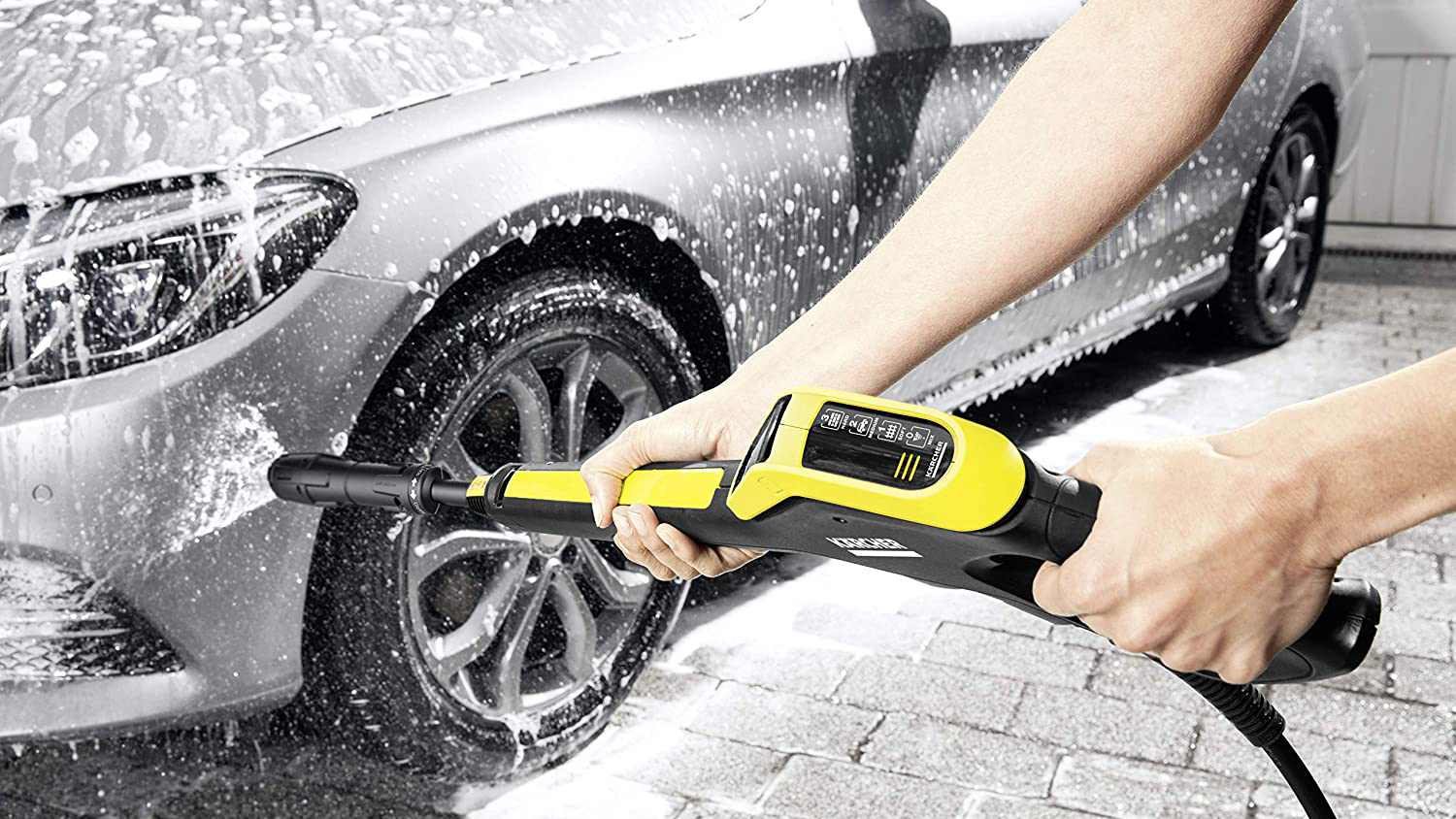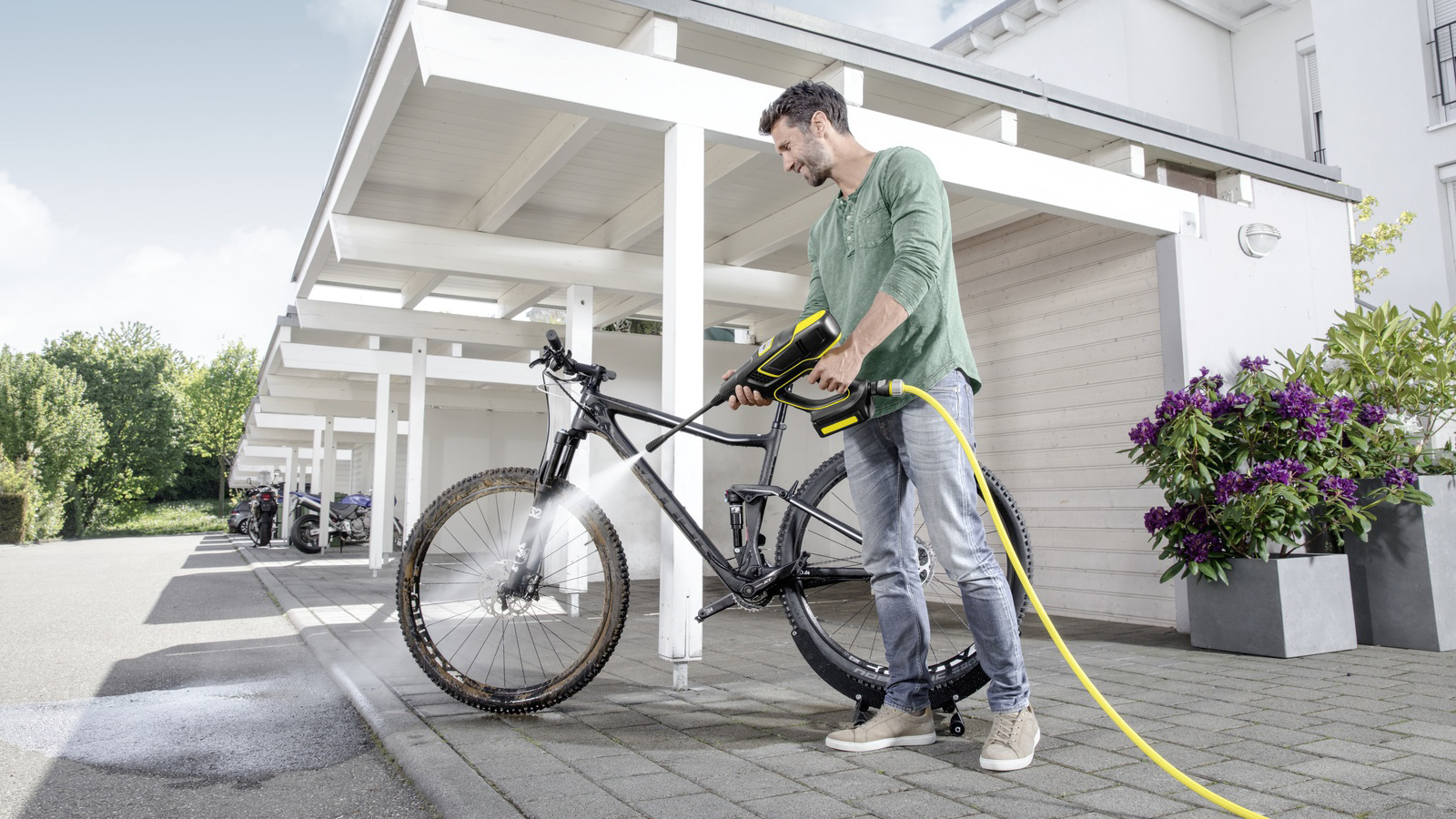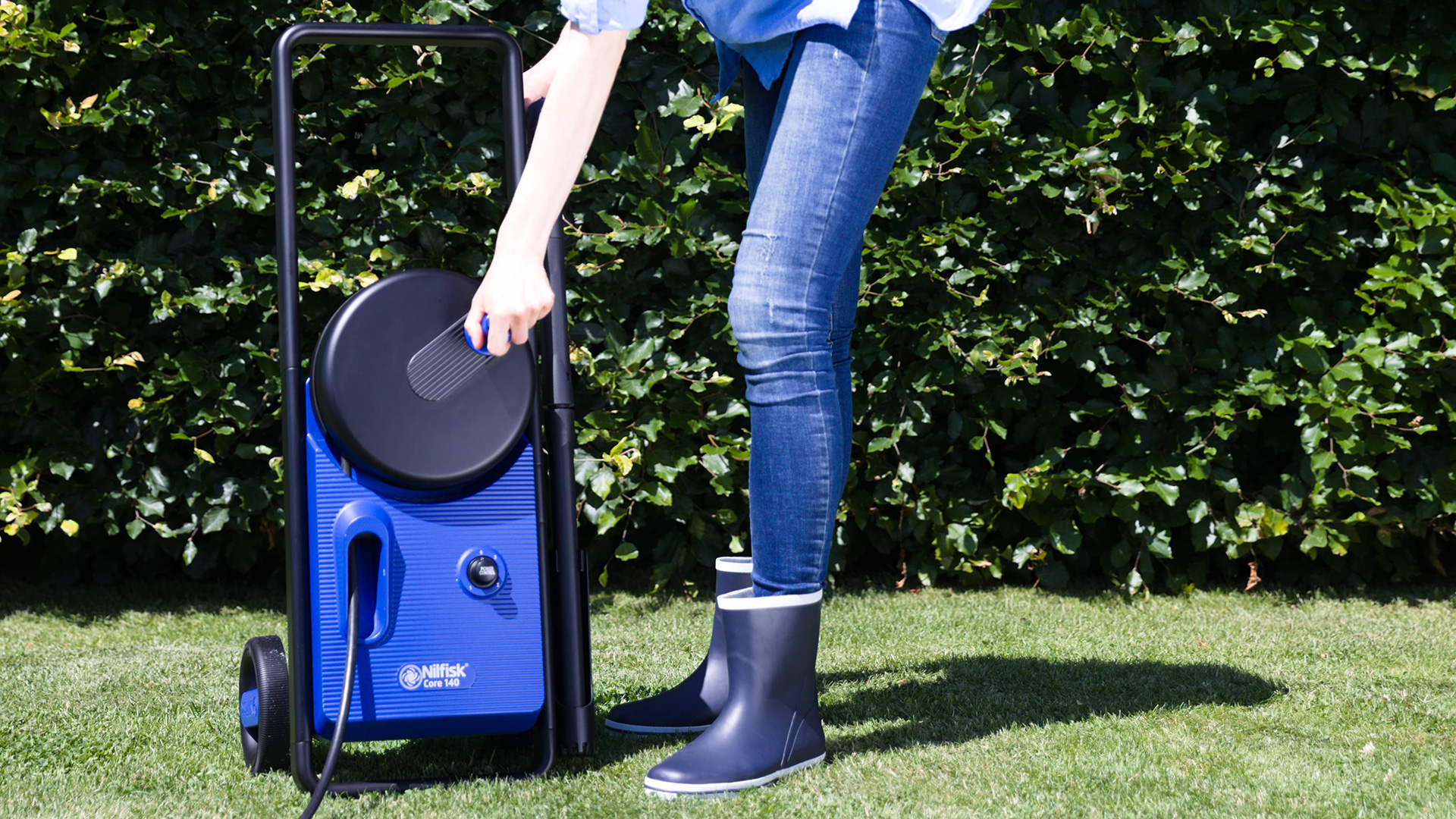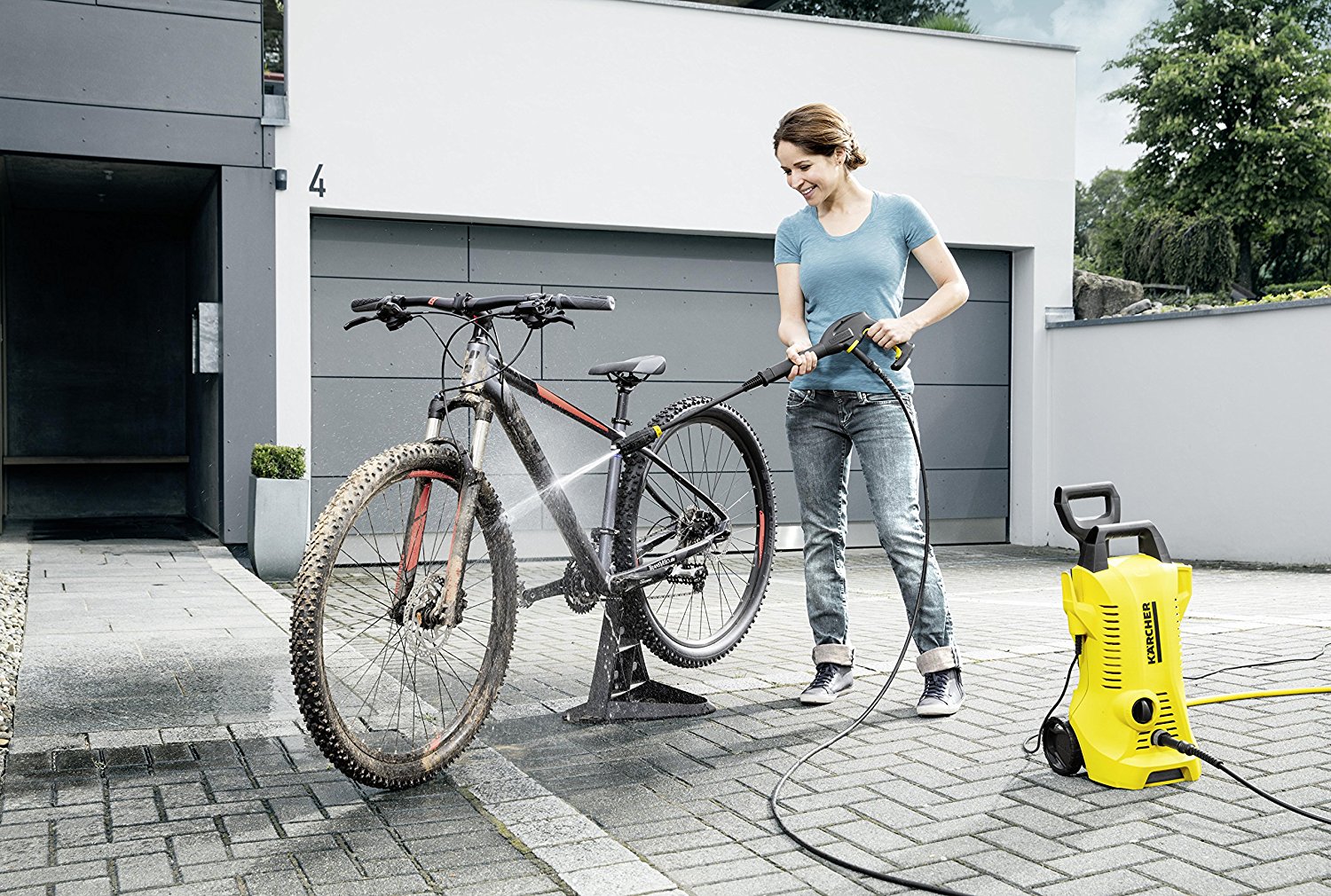6 mistakes everyone makes with pressure washers
Pressure wash like a pro, not like an amateur


As I've written about many times in T3's best pressure washers buying guide, as well as in numerous pressure washer reviews, I think a pressure washer is must-buy for many people.
Pressure washers make cleaning a wide-variety of things - from cars to patios to fences and more - much easier than if you've just got a bucket and sponge, and even if you have a hose pipe. You'll be amazed at just how much better cleaning outdoors is with a pressure washer.
However, during my time covering pressure washers for T3 I've come to know a lot of mistakes that I see people making frequently, so right here I list some of the most common so that you don't make them, too.

1. Using the pressure washer at maximum power all of the time
If there's one lesson you learn from this feature it should be never, ever, just turn your pressure washer up to maximum and get blasting without consideration for the surface or object you're cleaning.
This is critically important for larger, more premium pressure washer models, like the Kärcher K7 – you must only turn things up to maximum when the situation actually demands it.
Honestly, the amount of times I've seen people strip paint off their vehicles, fences, window frames and doors by unloading on them at maximum power is scarily high, while there's all sorts of problems caused when people blast their motorbikes or push cycles with a pressure washer at maximum power. Say hello to damaged wheel bearings, chains and linkages!
Just because your pressure washer can output at a maximum pressure of 18bar/MPa and a maximum flow rate of 600l/h doesn't mean you should use it at that for every application.
Get all the latest news, reviews, deals and buying guides on gorgeous tech, home and active products from the T3 experts
Be under no illusion, you will ruin the surfaces of many things using a pressure washer like this, so be sure to turn down the power or use the appropriate spray lance to vary your water stream's intensity.

2. Pressure washing too close to the cleaning surface
Another classic mistake and one that often compounds the first in this list. Getting closer to a surface with a pressure washer lance will reduce the spread area of the jet on it and mean the water hits the surface at a higher pressure.
As such, if you find, say, you're cleaning your car and a particularly tough piece of detritus has refused to clear off the paintwork after a couple of pressure washer passes, then absolutely do not just go and shove the lance right up next to the car's paintwork in a sort of "we will see who's boss!" reaction.
Yes, you'll almost certainly prize that detritus off, but there's also a high change you'll damage the paintwork in doing so, as you'll increase the power and concentration of the water jet to a level that it can't deal with. You'll likely be left with dulled paint work or, worse, noticeably jet patterns blasted into it.
Instead, this is the time to put the pressure washer down and manually remove the detritus by hand, before then passing once more over with the pressure washer at the optimal distance.
Basically, don't get too close to any surface or object with your spray lance.

3. Always cleaning an object or surface from one direction or angle
Another classic mistake I see a lot of pressure washer users making, often while making mistake number 2 in this list, is to just clean something from one direction. If an object is covered with something that isn't coming off from your current position then move and angle your spray to come at from a different position.
This, in my experience, almost always does the trick, with the powerful pressure washer jet managing to loosen the muck. I feel this tactic works especially well with bird faeces on windows and masonry.
Also, consider changing your jet type, too, if you have a pressure washer lancer that allows it. Fan sprays are often good for this, as they narrow the jet into a thin line that is good at getting under the edges of the unwanted matter.

4. Ignoring pressure washer detergents and chemicals
Many of today's best pressure washer makers also produce add-in chemicals and detergents that have been specially formulated to aid the cleaning of specific things. For example, there are dedicated detergents for cleaning stone, which is great for patios and flagstones. Equally, there's special mixes for pressure washing wood (great for fences) and foams for cleaning vehicles.
And spending a little bit money to buy these products is what I would suggest anyone with a pressure washer should do, as they save the amount of water you have to use to clean something, and help you get better results, both in how the surface or object looks, and how long it will stay like that.
Basically, water can only take you so far without a lot of it being used to an overkill level, so save money on your water bill, and time pressure washing by picking some of these add-ons up.

5. Not dressing appropriately when pressure washing
Honestly, this is such a classic mistake. Picture the scene. It's a sunny Saturday and Dave decides he's going to pressure wash his patio. Wearing a pair of smart clean shorts, sandals, Ray-Ban sunglasses and a not-much-used Hawaiian t-shirt, he gets out his Kärcher K4 pressure washer, hooks it up to a water and power supply, locks and loads his spray lance, and then starts blasting away.
Fast forward but a few minutes and Dave is coated, head to foot, with a year's worth of grime, detritus, dust and muck. His Ray-Brans are speckled with mud, his bare feet and legs streaked with dirt and his shorts and shirt immediately in need of a wash.
Remember, in cleaning anything with a pressure washer you yourself will be highly likely to get very messy. As such, dress appropriately. Old clothes are good and you want to cover all your skin as much as possible. Wipe-clean clothing like macs are great, as too gardening gloves for the hands. In terms of your feet, wellingtons are your ultimate pressure washer foot friends, as again they wipe clean in seconds.
So, yes, while it's tempting to pressure wash in not much at all, or just to quickly get it done in what you're wearing, it's always worth changing before pressure washing.

6. Buying the wrong size of pressure washer
Lastly, we have more of a purchasing mistake rather than a pressure washer usage mistake, but still one to bear in mind if you're thinking of buying one or looking to upgrade your model shortly.
The mistake? Blowing hundreds of pounds on a pressure washer that is more powerful than the gods when, actually, for your usage scenarios you're never going to need most of what it can offer in terms of power or features.
Basically, to keep things simple, I would split your purchase into two main camps: in one camp you're going to use your pressure washer regularly to clean patios, masonry, windows, doors, fences, vehicles and more, and maybe even pressure wash pavements and other things too.
While in the other camp you're going to use your pressure washer every now and then to clean your push bike, car and - maybe - give the windows a quick blast.
If you're in the top camp then I'd be looking to buy a mid-to-large pressure washer - something like a Karcher K4 or K7 - but if you're in the latter then something like a Karcher K2 is all the power you're going to need. Smaller capacity pressure washers are much cheaper than their bigger brothers, so shop smart.

Rob has been writing about computing, gaming, mobile, home entertainment technology, toys (specifically Lego and board games), smart home and more for over 15 years. As the editor of PC Gamer, and former Deputy Editor for T3.com, you can find Rob's work in magazines, bookazines and online, as well as on podcasts and videos, too. Outside of his work Rob is passionate about motorbikes, skiing/snowboarding and team sports, with football and cricket his two favourites.